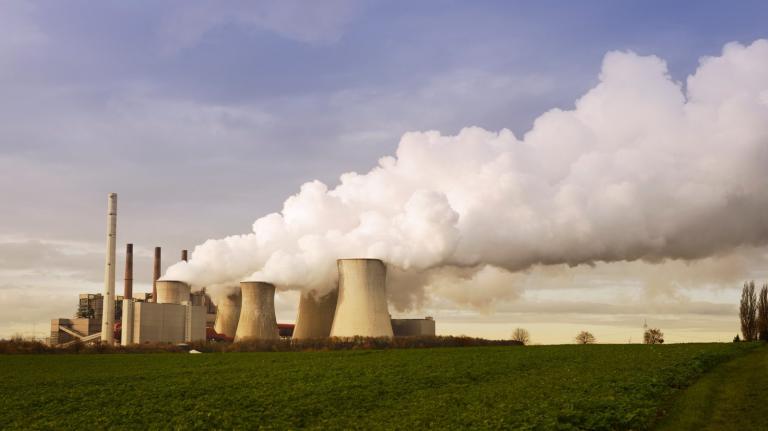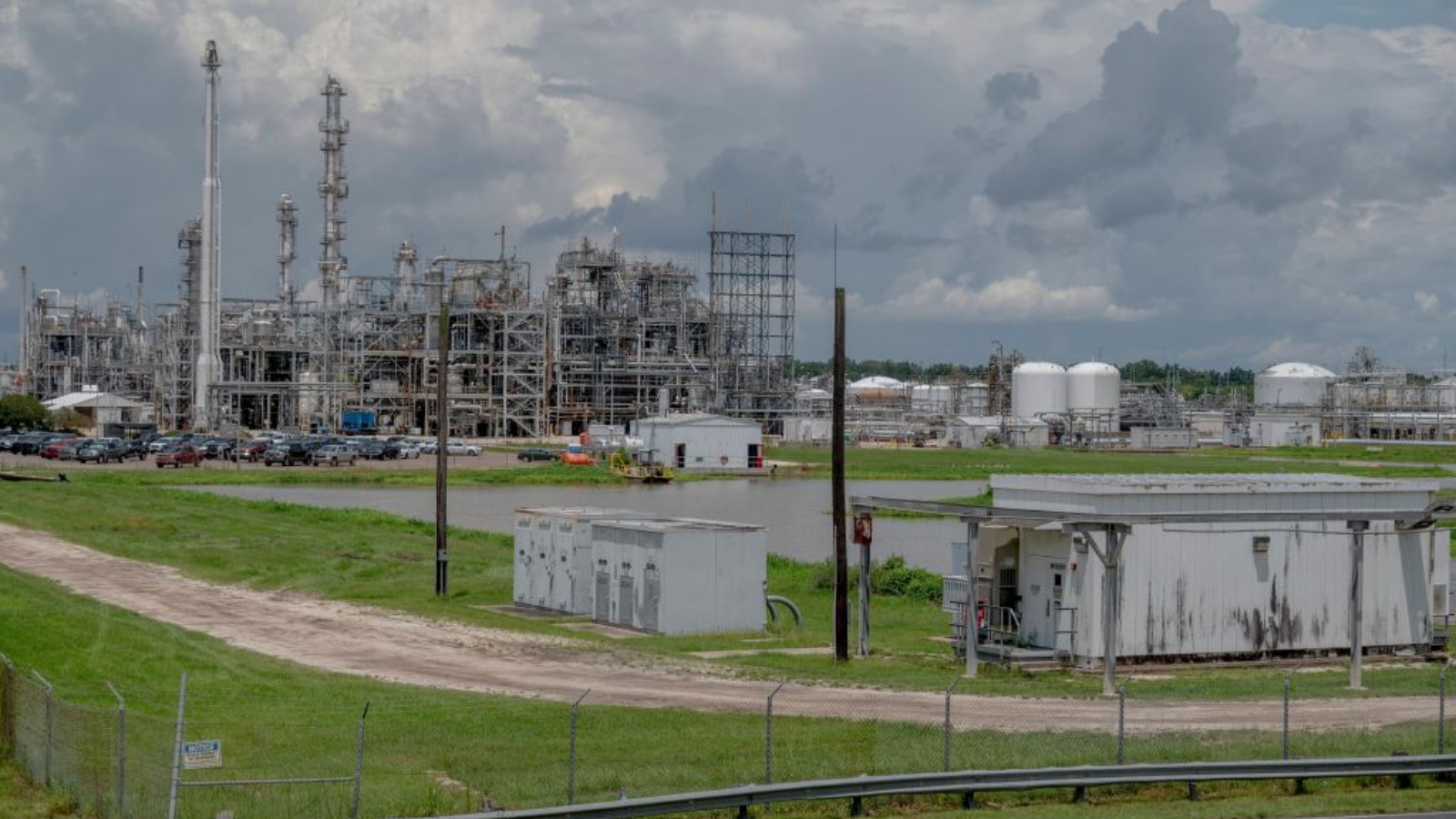It’s rare for the Environmental Protection Agency to try to force a chemical plant to immediately reduce or halt its toxic airborne emissions. Such actions typically occur in extreme circumstances when a facility presents an acute risk of bodily injury to the public — for example when an explosion is imminent.
But this week, the Department of Justice filed a legal motion on the EPA’s behalf, asking a judge to order a Louisiana plant to substantially decrease releases of a cancer-causing chemical it’s been emitting for half a century. The motion for preliminary injunction, as the legal request is known, is still awaiting the district court judge’s ruling.
Denka Performance Elastomer, a synthetic rubber manufacturing plant owned by a Japanese company of the same name, sits on a bank of the lower Mississippi River in southeast Louisiana’s industrial corridor, a region commonly known as “Cancer Alley.” Originally built by Dupont, which still owns the land beneath the plant and a separate operation on the same site, Denka releases thousands of pounds of the toxic chemical chloroprene annually into the air of St. John the Baptist Parish, where more than 60 percent of residents are Black. This week, residents in the neighboring parish of St. James sued their local officials for repeatedly greenlighting new chemical development in the parish’s predominantly Black areas.
The government filed the motion under Section 303 of the Clean Air Act, which gives EPA officials the authority to take emergency action when there is proof that a pollution source is “presenting an imminent and substantial endangerment to public health or welfare, or the environment.” The move comes after the government sued Denka in late February, alleging that it had failed to curb its cancer-causing pollution. If approved by the judge, the motion could provide nearby communities with immediate but temporary relief while the larger case is pending. The motion asks Denka to install pollution controls on certain emission points within its facility and to provide the government with daily access to the plant grounds to ensure compliance.
Denka representatives did not respond to an immediate request for comment. In a statement issued in March, executive officer and plant manager Jorge Lavastida said that the EPA was acting on “outdated and erroneous science” regarding the danger of chloroprene exposure and that Denka’s plant was in compliance with all of its air permits. (The company sued the EPA in January, disputing its 2010 chloroprene assessment, which found that the chemical can likely cause cancer).
This is just the third time that the Biden EPA has used the Clean Air Act’s emergency powers to discipline an industrial facility. In May 2021, the agency forced a refinery in the U.S. Virgin Islands to close after it was found to be raining drops of crude oil on residents nearby. Some fled the scene on foot, afraid to turn on their cars for fear of an explosion. That same month, the agency issued an emergency order to require a pulp mill in South Carolina to reduce its emissions after it released thousands of pounds of hydrogen sulfide into the air, causing a nearby town to smell like rotten eggs.
But the government has never used Section 303 to address industrial cancer risk, the harm of which is more difficult to identify since it accumulates over the course of a lifetime.
The EPA has known about the danger of Denka’s carcinogenic emissions since at least 2015, when an agency model found that the census tract where the plant operates had one of the highest levels of cancer risk from toxic air pollution in the country. Deena Tumeh, a lawyer at the environmental nonprofit Earthjustice who has been working with residents in a nearby town, told Grist that with this motion the EPA is acknowledging that cancer risk, though accumulated over many years, can present the kind of imminent danger that allows Section 303 to be invoked.
“It doesn’t have to be that a bunch of people died over the weekend and now the EPA has to shut down the plant,” she said. The Clean Air Act’s emergency powers are “about prevention of harm, which is why the danger has to be imminent but not necessarily already happening,” she added.
The EPA’s February suit against Denka suggests just how imminent the cancer risk in the area could be.
“Infants born today in the communities surrounding the Facility who are exposed to the highest measured levels of chloroprene from Denka’s neoprene manufacturing operations will exceed an estimated lifetime of acceptable excess cancer risk within approximately their first two years of life,” the complaint reads.
Tumeh said the case could set an important precedent for future situations in which a chemical plant is generating substantial cancer risk in a nearby community — a common occurrence across the nation’s industrial landscape.
The next step is for the Eastern District Court of Louisiana to hold a hearing on the case, after which Judge Carl J. Barbier will decide whether to grant the EPA the conditions of its motion. While there is no deadline for the judge to make a decision, Tumeh said that the nature of an emergency order typically means that such motions are adjudicated quickly.
Editor’s note: Earthjustice is an advertiser with Grist. Advertisers have no role in Grist’s editorial decisions.



